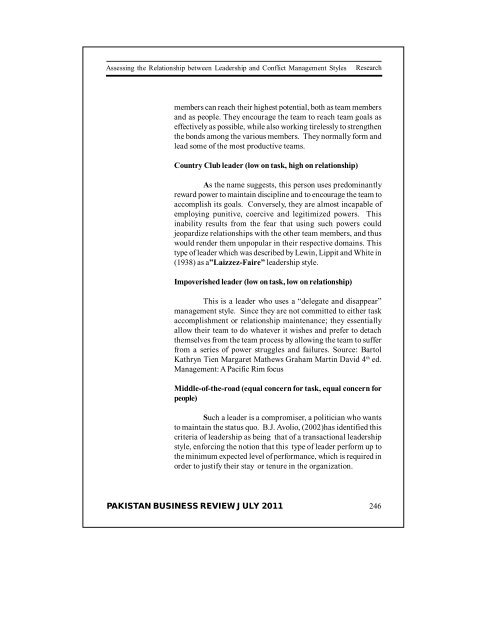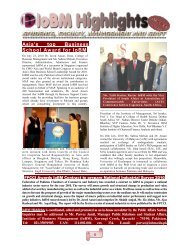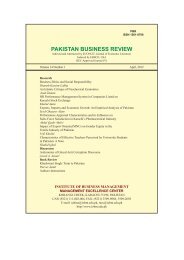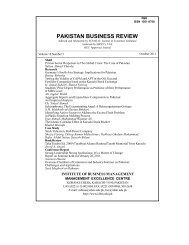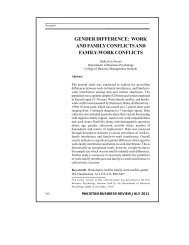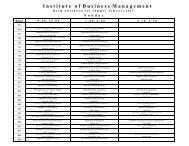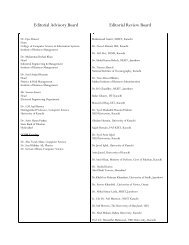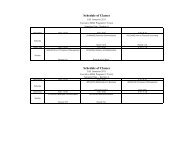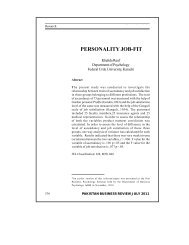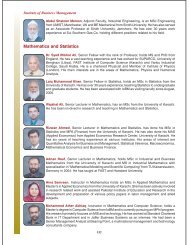PAKISTAN BUSINESS REVIEW - Institute of Business Management
PAKISTAN BUSINESS REVIEW - Institute of Business Management
PAKISTAN BUSINESS REVIEW - Institute of Business Management
Create successful ePaper yourself
Turn your PDF publications into a flip-book with our unique Google optimized e-Paper software.
Assessing the Relationship between Leadership and Conflict <strong>Management</strong> Styles<br />
Research<br />
members can reach their highest potential, both as team members<br />
and as people. They encourage the team to reach team goals as<br />
effectively as possible, while also working tirelessly to strengthen<br />
the bonds among the various members. They normally form and<br />
lead some <strong>of</strong> the most productive teams.<br />
Country Club leader (low on task, high on relationship)<br />
As the name suggests, this person uses predominantly<br />
reward power to maintain discipline and to encourage the team to<br />
accomplish its goals. Conversely, they are almost incapable <strong>of</strong><br />
employing punitive, coercive and legitimized powers. This<br />
inability results from the fear that using such powers could<br />
jeopardize relationships with the other team members, and thus<br />
would render them unpopular in their respective domains. This<br />
type <strong>of</strong> leader which was described by Lewin, Lippit and White in<br />
(1938) as a”Laizzez-Faire” leadership style.<br />
Impoverished leader (low on task, low on relationship)<br />
This is a leader who uses a “delegate and disappear”<br />
management style. Since they are not committed to either task<br />
accomplishment or relationship maintenance; they essentially<br />
allow their team to do whatever it wishes and prefer to detach<br />
themselves from the team process by allowing the team to suffer<br />
from a series <strong>of</strong> power struggles and failures. Source: Bartol<br />
Kathryn Tien Margaret Mathews Graham Martin David 4 th ed.<br />
<strong>Management</strong>: A Pacific Rim focus<br />
Middle-<strong>of</strong>-the-road (equal concern for task, equal concern for<br />
people)<br />
Such a leader is a compromiser, a politician who wants<br />
to maintain the status quo. B.J. Avolio, (2002)has identified this<br />
criteria <strong>of</strong> leadership as being that <strong>of</strong> a transactional leadership<br />
style, enforcing the notion that this type <strong>of</strong> leader perform up to<br />
the minimum expected level <strong>of</strong> performance, which is required in<br />
order to justify their stay or tenure in the organization.<br />
<strong>PAKISTAN</strong> <strong>BUSINESS</strong> <strong>REVIEW</strong> JULY 2011<br />
246


